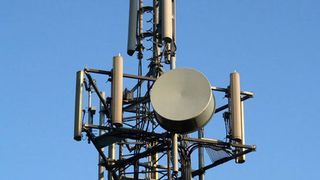
Though EE has been offering a limited 4G service for about a year now, the true UK 4G revolution has only just kicked off.
Both O2 and Vodafone joined the 4G market at the end of August, and when Three joins the party in December it will mean that Britain is fully 4G at last.
But there's a problem. Or rather, there's a potential problem for a small minority of the UK population.
Disruptive technology
All four 4G-capable networks face a clash with the UK's Freeview television service that could interfere with a number of UK residents' TV signals. This disruption may involve a loss of sound, a blocky picture, or at worst a complete loss of some TV channels for certain people using Freeview.
At800 is the name of the company that has been established to manage this potential issue. It's entirely funded by the four UK networks mentioned above - EE, O2, Vodafone and 3 - who have contributed a total of £180 million to that end.
So what's the source of this potential signal disruption? Much of this new 4G data traffic will operate on the 800MHz spectrum, which was freed up with the end of UK TV analogue broadcasts last year and promptly auctioned off by the UK government for 4G usage. Each of the four major UK networks took a slice.
With the extra headroom afforded by this freeing up process - as the well as the use of two other frequencies, 2600MHz and 1800MHz - UK operators are able to offer (or will eventually) mobile phone data speeds that are roughly equivalent to a decent broadband service.
Get daily insight, inspiration and deals in your inbox
Get the hottest deals available in your inbox plus news, reviews, opinion, analysis and more from the TechRadar team.
4G killed the TV star
The trouble that the UK faces is that our Freeview TV service operates on the nearby 700MHz spectrum. In most cases these two adjacent signals play nicely. "4G provides a very clean signal that only occupies that spectrum it has been allocated," explains at800 CEO Simon Beresford-Wylie.
In certain areas around Britain, though, these two adjacent spectrums overlap, causing the aforementioned disruption to Freeview TV services. As Beresford-Wylie explains it, "the issues can arise when systems are overloaded by too strong a combined signal from DTT and 4G that can cause amplifiers or tuners to fail."
This essentially boils down to those households that are located very close to a 4G mast, and who also use Freeview as their primary means of watching TV. As you can imagine, this is a relatively small number of people.
Back at the beginning of June, at800 announced that no more than 90,000 households would be at risk of this 800MHz disruption. We asked the company if these projections remained accurate some three months on, and they confirmed that they were.

Enter at800
Fortunately, there's a contingency plan in place to deal with any clashes between these two UK services.
In addition to supplying the funding, each UK network operator has a representative on the 4G/TV Co-existence Oversight Board that oversees at800's work.
This close cooperation helps at800 pinpoint exactly where help is needed. "The four operators share with us their rollout plans in terms of mast activation to allow us to target our mailing to households that could be affected within the next three to twelve weeks by a new mast being activated," explains Beresford-Wylie.
So what do you do if you're one of these affected 90,000 households? As mentioned, steps have been taken to help you out, and it shouldn't cost you a penny.
For most people affected by the clash, a simple signal filter will be sufficient to restore your Freeview signal to full strength. These will be mailed out to affected households in advance of 4G masts being activated in their area, alongside further instructions on its installation.
